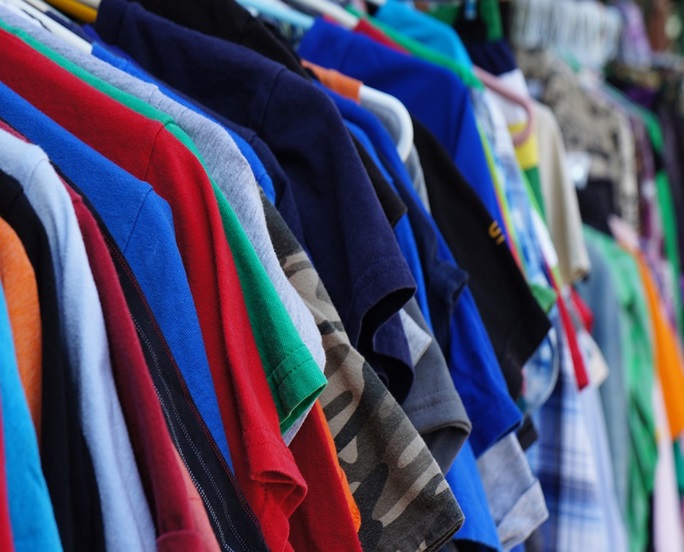
The fact is that not everyone can afford to buy a new and expensive product from a famous brand, so second-hand stores are very popular today. The second-hand boom came with the onset of the global crisis, especially in Europe. Since then, used clothing has become very popular around the world.
At the heart of the thriving second-hand clothing business is the fact that fashion is evolving very fast, leading to a short 'life' of things, especially in developed countries. In Europe, it is considered perfectly normal to put on new clothes several times and then throw them away, so the idea arose to sell the discarded items again, but this time at a much lower price.
Almost every woman has had to open her crowded wardrobe and ask herself "This blouse is so beautiful, but I can't give it to anyone anymore?" or "It would be a shame to throw away these expensive pants." In these situations, used clothing stores can help.
Let's find out now the advantages and disadvantages of used clothes.
Disadvantage 1: Buying unnecessary things.
Think about how many times you bought things from second-hand clothing stores just because they are cheap. And so you leave the store with a bag full of different dresses, skirts, blouses that you may never wear. For those "addicted" Ladies to this type of shopping are advised to buy a garment that can be expensive, but to be worn and not to collect dust in your otherwise crowded wardrobe and eventually be thrown away.
Disadvantage 2: Specific odor.
The fact is that used clothes just smell awful. This is due to the various detergents used to disinfect clothes. who suffer from various allergies find it difficult to enter such a store and what is left to wear these clothes.Disadvantage 3: No suitable dimensions.
Yes, this is very unpleasant, because you just like a dress and it turns out that it does not suit you. And as we all know, the clothes used do not come in different sizes but only one number of the model.
Disadvantage 4: The combination is very difficult.
Even if you like a product, it will take you a long time to find something to combine it with, and in the end you may never wear it.
Disadvantage 5: Defects
Stains and holes on clothes - these are problems with this type of used clothes. You need to look at things carefully so that you don't get disappointed later at home.
Disadvantage 6: Cannot return purchased product.
This is also one of the disadvantages of these stores. Although some of them already offer the option to return the product, most stores do not accept returns.
Disadvantage 7: Loss of time.
How many piles of rubbish do you have to dig to find the "pearl"! A solid and modern thing that will fit in size, style and will not be full of holes. Believe me, it will take you a long time.
Disadvantage 8: Clothes are treated with various harmful preparations.
Opponents of second-hand shops say many infections live on used clothes and are made to some degree. Clothes are treated with chemical and thermal agents. The shipment must have a certificate. It is believed that all goods come to us mainly from Europe and there is nothing to fear: the goods will not be released without the relevant documents, but you have probably noticed how "oriental" models are in stores.Disadvantage 9: It's just unpleasant to wear someone else's.
We can not ignore the psychological factor - we have no idea who the previous owner was. Many people despise wearing something that was previously used by a stranger.
Disadvantage 10: Not prestigious.
You are unlikely to meet a woman who is proud to say that all her fashionable clothes are second-hand. They try to keep quiet about it. Wearing used things is not prestigious.
Let's look now at the benefits of second-hand goods.
Advantage 1: Affordable.
Where else can you buy a bag or blouse for $ 2. Or update your wardrobe for the winter by paying $ 10 for a normal jacket. It is unrealistically cheap prices that lead buyers to second-hand clothes.
Advantage 2: Branded clothing against pennies.
Atmosphere, Mark, Tom Tailor and Spencer - all this can be found in second-hand stores. Brands that cost a lot of money in stores here are sold for pennies, but do not expect models from the latest collections of Versace in your second-hand shop.
Advantage 3: You can be original.
This is a place for cool things and rare vintage clothes. The thirst for originality leads many fashion fans to second-hand stores.
Advantage 4: European quality.
The things used are sometimes of better quality than the brand new ones. It sounds strange, but it's a fact. Protruding threads, spools and stitch recognition are for clothes from a Chinese or Turkish manufacturer. But second-hand shops in most cases sell European quality brands that do not allow such negligence. In addition, the garment is already worn out and you can see how it has withstood the test of time. High quality products may not lose their shape and color for many years.
Advantage 5: Large selection of children's clothing
Dressing a constantly growing child is a pain for all parents. In second-hand shops, clothes are very budget-friendly and you can easily buy them and then share them with friends.
Advantage 6: You can find "bonuses" in a garment pocket.
Personally, I have found 10 euros in my pocket.
Finally, in our article we want to express our opinion. Dear readers, if you liked a garment from a second-hand shop, do not hesitate to buy it no matter what people around you think. Be proud and happy .